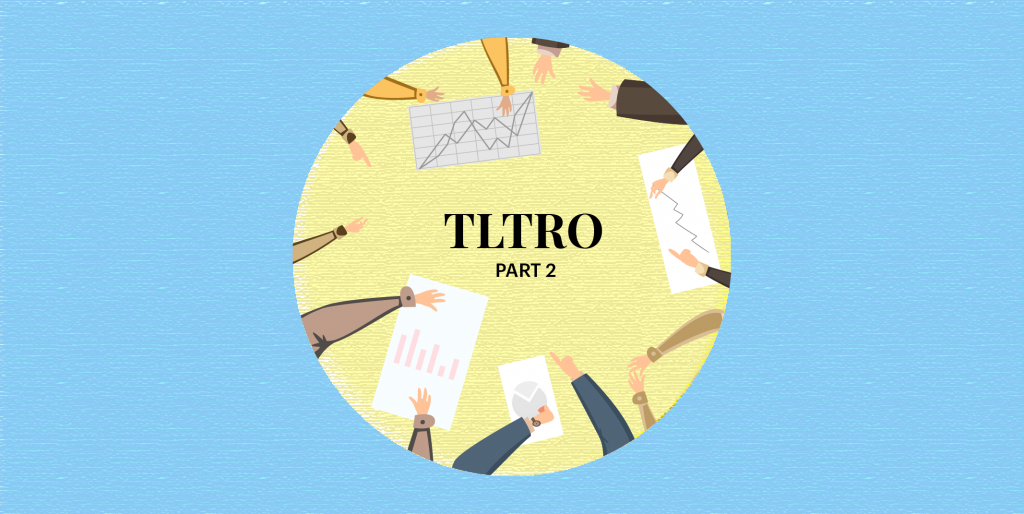Last Updated on Mar 24, 2021 by Manonmayi
Now that you are familiar with LTRO and TLTRO and their impact on the macro-levels of the economy, here’s the next part that discusses the two tranches of TLTRO operations conducted in the country. Read on! BTW, we suggest you read the Credit crunch and LTRO Part 1 to get more context.
This article covers:
How does TLTRO matter to borrowers?
How does TLTRO matter to investors?
LTRO and TLTRO in India
In Feb this year, the RBI has announced TLTRO worth Rs 1 lakh crore to assist banks in meeting funding requirements or mismatches. This amount was to be implemented in phases, meaning the RBI would auction funds under the LTRO in parts targeted at a specific segment of the economy. Accordingly, TLTRO I was directed at commercial banks and TLTRO II was targeted at NBFCs and micro-financial institutions. Here are the deets.
TLTRO 1
Here are the salient points of the TLTRO’s first tranche.
- Under the TLTRO I, the RBI auctioned loans worth Rs 25,000 crore having a tenure of 3 years. Surprisingly, the RBI received 18 bids worth Rs 1.13 lakh crore (7.7 times more) in the auction of the tranche. The rate of interest was set at 5.15%, which was the prevailing repo rate then
- The RBI required banks to invest the funds obtained under TLTRO in commercial papers, investment grade corporate bonds, and non-convertible debentures (NCDs) issued in the primary and secondary markets (issued by NBFCs and MFIs). The ratio for investment in the markets was set at 50:50
Key takeaway
By subscribing to primary market instruments, banks infused low-cost funds in the primary market, which the issuing companies can use to ramp up commercial activities. Similarly, the funds invested by banks in the secondary market would help NBFCs and MFIs in meeting their liquidity gaps.
TLTRO 2
In contrast to TLTRO I, the RBI didn’t receive a welcoming response to TLTRO 2. Here are the details.
- NBFCs and MFIs usually meet their working capital needs by borrowing from debt markets. Given that these players had a hard time to raise working capital, TLTRO II was targeted at NBFCs and MFIs to offer liquidity
- The second tranche of TLTRO was worth Rs 25,000 crore and offered at the prevailing repo rate of 4.4%. However, out of the total liquidity available, RBI only received bids worth Rs ~12,850 crore
- The RBI required banks to invest funds availed under TLTRO 2 in investment grade bonds, commercial papers and non-convertible debentures offered by NBFCs.
The details of allotment of the funds are:
- at least 50% of the total auctioned amount to small and medium-sized NBFCs and MFIs
10% in securities issued by MFIs
15% in bonds issued by NBFCs having an asset size of Rs 500 crore or below
25% in bonds of NBFCs having an asset size of Rs 500 to Rs 5,000 crore
Key takeaway
The reluctance in bidding for liquidity under TLTRO II only showed that banks are not willing to lend to NBFCs and MFIs, given the high risk involved.
How does TLTRO matter to borrowers?
If you are familiar with the basics, you will know that interest rates on loans and investments are sensitive to the repo rate. That is, an increase in the repo rate should also shoot the interest rate on loans and investments, and vice versa.
Notably, the RBI has slashed the repo rate by 139 basis points (bps) since Jan 2019, but banks have only transferred a portion of this rate cut to the borrowers. That is why you may not have seen a significant decline in the rate of interest on your loans. That is why you continue to pay a higher rate of interest on your EMIs.
But by rolling out TLTRO, the RBI has offered additional liquidity to banks at low-cost. The apex bank believes that this step should allow banks to transfer the benefit of rate cuts to customers by charging a lower interest rate on retail and commercial loans, while also maintaining their margins.
How does TLTRO matter to investors?
It is but natural for stock markets to fall and interest rates on investments to decline when an economy is reeling. In the recent past and current times too, there have been instances when stock markets hit rock-bottom and the RBI slashed the repo rate to address high inflation.
Such times may not seem conducive to investors, who not only refrain from investing, but also liquidate their positions in stocks and investments in other asset classes to safeguard their wealth. At such times, even the slightest financial measure such as the TLTRO would boost investors’ sentiment and tidy the exchanges to an extent.




